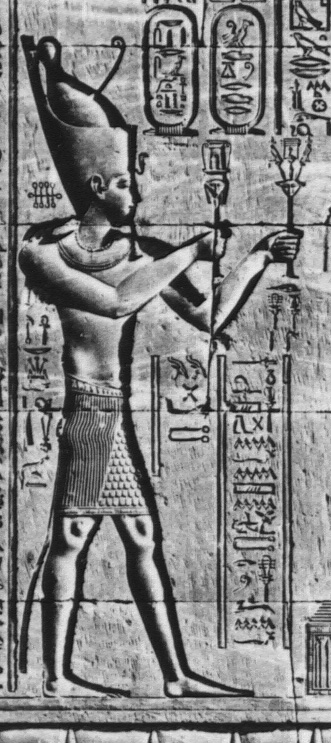 The Pharaoh.
The Pharaoh. The Pharaoh.
The Pharaoh.It is often said that the Egyptian king was regarded as a god, but this is not quite correct. The king was a netjer nefer, "the junior god", but he was not a god (netjer) of the same kind as, for example, Amun, Re or Ptah. Instead, he seems to have been placed somewhere between the gods and people. This was a difficult role to live up to because it carried duties and obligations to both sides. The king was responsible to the gods for the smooth running of the world which they entrusted him at his coronation. One of his main tasks was to keep good order in society as well as in nature, and to avoid the occurrence of chaos. But he was also responsible to people for maintaining good relations with the gods (in particular for the performance of temple rituals and presentations of offerings on their altars) and for keeping them favourably disposed towards mankind.
This special position made the Egyptian king a theoretical master of everything in Egypt. He was the owner of most of the land and he could order people to carry out any tasks he wished. But in practice this absolute power was moderated.
The king's obligation to look after the many temples of gods meant that some of the land and other resources which he possessed had to be given up and handed over to those directly involved in the upkeep of these temples. In theory it was the king who provided for the needs of all the gods in temples all over Egypt and who made all the offerings. This was, of course, impossible so in practice many of his duties were delegated to priests who acted on his behalf.
The king's duty towards his people required him to safeguard everybody's wellbeing in this world and in the afterworld. He was expected to provide for them in their lifetime and for their tombs after their death. Much of his wealth was used to support courtiers and various officials (who were expected to behave in the same way towards their subordinates). While in theory all the administrative decisions were made by the king, in practice the country was governed by a complex bureaucratic system which had many officials headed by the vizier (prime minister).
Royal privileges as well as duties began at the coronation. The new king was often the eldest son of the previous king, but not always. At his coronation the king received the five royal names which described him as king and linked him to various deities.
The first three acknowledged him as the rightful king:
The fourth and fifth names defined his entitlement to rule over all Egypt. They were written in cartouches, ornamental oval frames formed by a piece of rope tied into a noose.
The king had various crowns to wear on different occasions. The most important were the white and red crowns (sometimes combined and worn at the same time). Often he was shown holding the hekat (crook) and nekhakha (flail).
Between about 2650 BC and 1650 BC Egyptian kings were buried in pyramids. From about 1550 BC until about 1080 BC they were buried in rock-cut tombs in the Valley of the Kings, on the west bank of the Nile opposite Luxor.
Photograph: An Egyptian king wearing the combined red and white crowns and holding two sistra (rattles), in a scene in the temple of Hathor at Dendera. Note the bull's tail at the back of the kilt. Detail of a photograph taken in about 1890, Griffith Institute photo. 3454.